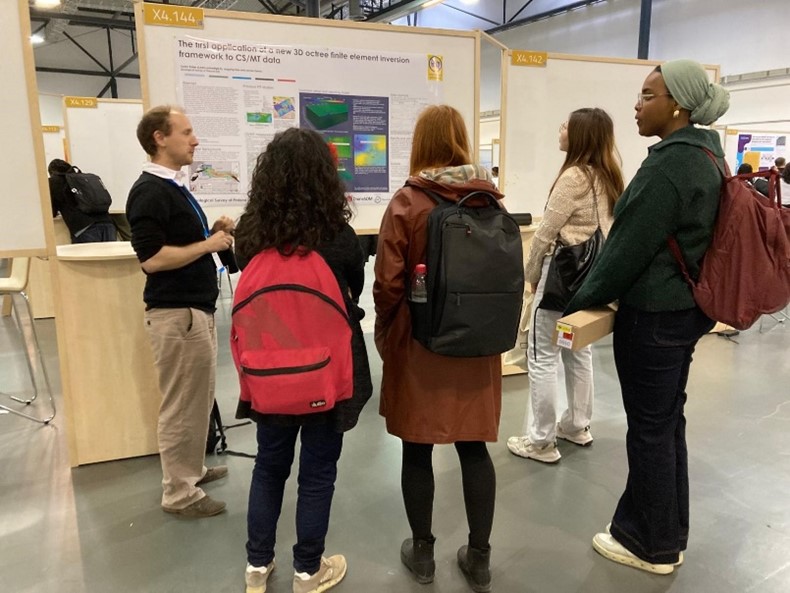Year after year one week in April Vienna turns into the geoscience capital of Europe, hosting Europe’s largest conference for geoscience, the EGU General Assembly. This year was a record breaker with 20,979 attendees, with 18,896 presentations in 1,044 sessions.
GTK’s two main developers of the DroneSOM 3D electromagnetic inversion software (Longying Xiao and Cedric Patzer) presented their latest results and current capabilities of the new EM inversion to geoscience researchers from all around the world.
Right on Monday 15th April, Cedric Patzer presented his poster on “The first application of a new 3D octree finite element inversion framework to CS/MT data”. His poster attracted many visitors and sparked interesting in-depth discussions on future applications with both early career as well as senior scientists ranging from Iceland to China. PhD students from Iceland especially were curious about the possibility of using the DroneSOM EM system for imaging the shallow subsurface in volcanic settings as well as in aquifer studies. Besides presenting his own work and listening to talks on Deep Geothermal energy among others he also took an official role as judge in the outstanding Student and PhD candidate Presentation (OSPP) programme in the “Electromagnetic Geophysics: Data, Modelling, Interpretations, and Instrumentations” session which he also co-convened.
While Cedric’s poster was focusing on the application side Longying presented the theoretical background and technical details of the inversion. She presented the latest developments in the form of a poster titled “Parallel inversion of drone-based electromagnetic data for near-surface geophysical prospecting.” on Wednesday 17th. Her presentation too attracted interest from young PhD students to experienced professors. All were interested in trying a new well-parallelized inversion code and were also very curious if the development can be free use for academic purposes. Besides, Longying co-convened a session titled ‘Applications of geo-electromagnetic methods in resource, engineering and environmental studies’ in the division “Energy, Resources and the Environment (ERE)’. She was also invited to be a judge in the Outstanding Student and PhD candidate Presentation (OSPP) programme. Longying attended many environmental-oriented energy-related presentations, which ranged from carbon capture, hydrogen storage, reusing post-gas/mining facilities, shallow geothermal studies to methological geophysical developments.

Cedric guiding Icelandic PhD Students through his poster (pictures on the top). Longying with her poster on the new EM inversion code and general DroneSOM flyer (picture at the bottom).

